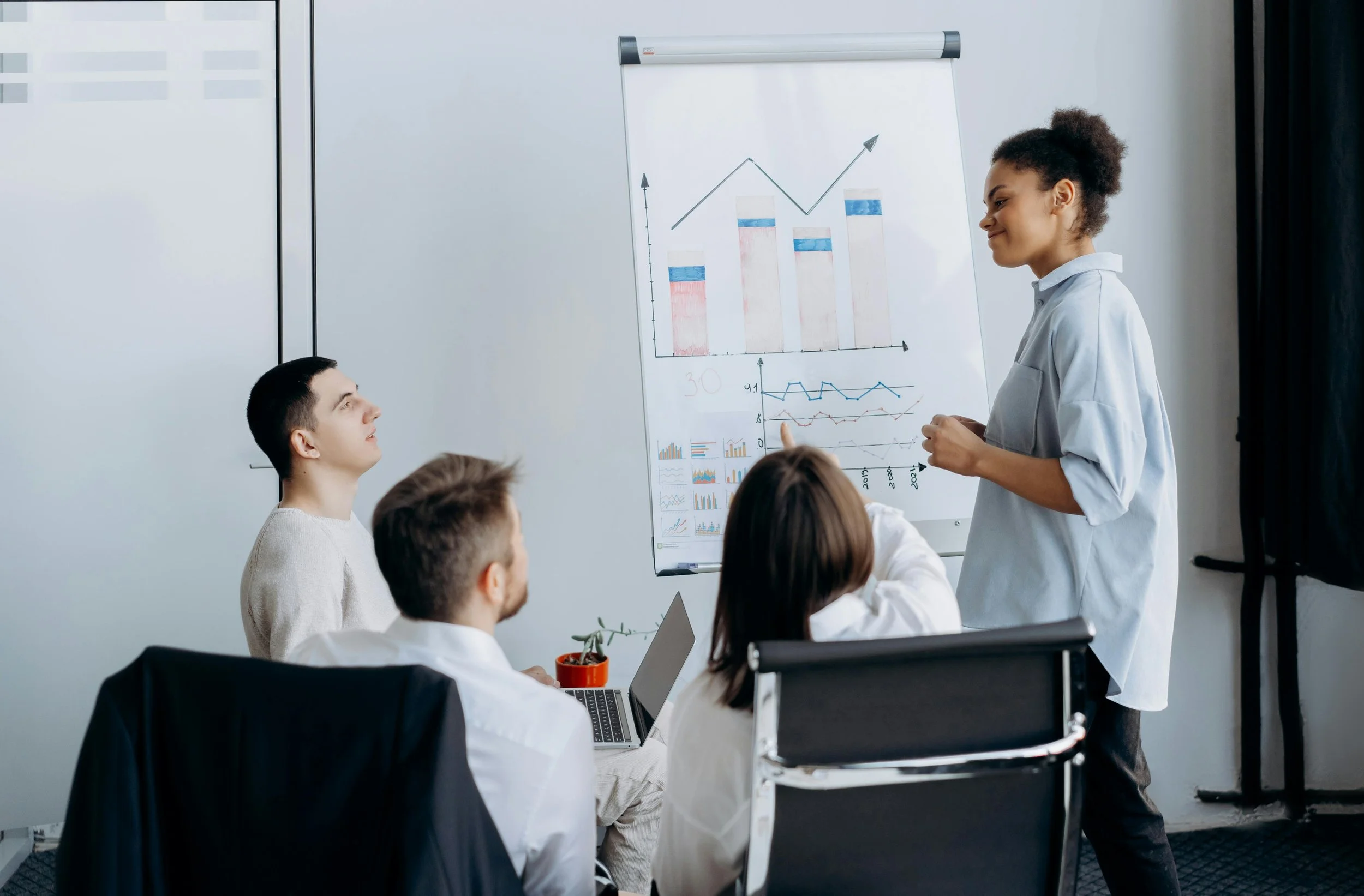Swimming in Data - How Marketers Can Use Data to Become Better Storytellers
There is an overwhelming amount of knowledge marketers can pull from customer interaction at every moment of the buying cycle. This behavioral information could very well influence the future of a brand’s marketing, products, and overall operations. We spoke with industry experts Jenifer Harmon from Store By Store and St. John, Arianna Howe from Sparkloft Media, and Blake Williams from The Shipyard about their thoughts on leveraging data and using tools to extract data to inform strategy.
Q1: How do you integrate data into strategy to create actionable steps?
Jenifer Harmon, the EVP, Practice Lead at Store By Store and St. John, noted that “today's restaurant and retail brands are truly swimming in data” and it ranges “from unwieldy transactional data to loyalty membership profiles, digital media tracking, and beyond.” Even though data is necessary to inform strategy, the challenge for brands is “allocating the resources to connect this disparate data AND build a framework to regularly mine the data to identify and act upon growth opportunities.”
“Store By Store was created specifically to help brands, particularly restaurants, develop and execute data-driven strategies to drive growth, beginning at the individual store level,” shared Harmon.
They do this by having:
Belief: “Belief that growth opportunities are often lying dormant in what’s happening in-store every day.”
Analyzing Information: “By analyzing transaction data, preference data, marketing/media data, audience/traffic data and competitive data for individual stores we can provide a roadmap to short-term and long-term growth.”
Community: “We create strategies to engage the community and lean into the preference, loyalty, behavior of the current users and identify the location of like-audiences, providing direction with the best message, best time, best audience to drive new traffic and increase frequency of the current guests by group. Our clients have seen increases up to 5%-10% growth in traffic and sales within four weeks of employing this Store By Store approach.”
Continuing in the vein of investing in the human-side of things while dealing with data, Arianna Howe, the Vice President at Sparkloft Media, noted that the convergence of creativity and data mixed with human connection creates a powerful brand. At Sparkloft, they use storytelling and problem solving to help brands achieve unparalleled success by harnessing the potential of data-driven creativity.
In order to get started, Sparkloft focuses on human connection - “understanding the essence of your brand, translating your business objectives into human problems, and finding hidden advantages that create genuine emotional bonds with your audience. This emotional connection becomes the driving force that propels your brand toward success and long-lasting loyalty.” They also prioritize the power of curiosity to unlock new and unexpected insights. Questions help them better understand the consumer's desires and needs. “This approach eradicates bias and opens up a world of possibilities for our creative team, leading to insights rooted in truth,” shared Howe.
Using their drive for human connection and their curiosity, Sparkloft uses four pillars to integrate data into strategy:
Consumer Insights: Our journey begins with a keen focus on understanding the intended consumer. We delve into their social media behavior, Google search habits, purchase decisions, influencers, and the brands that captivate their attention and wallets.
Competitive Analysis: Uncovering market gaps and opportunities for differentiation is crucial. We scrutinize direct and indirect competitors to grasp their value propositions and identify what they are solving for the same audience.
Client Research: We explore what makes our client's product or service unique and what their loyalists love about them. This understanding helps us discover what our client can uniquely own in the market.
Cultural Alignment: We assess cultural moments and technological advancements to align our client offerings with audience needs and expectations. Understanding "why now" and "what resonates" is key to capturing the audience's hearts.
Blake Williams, Director of Data Strategy at The Shipyard, also emphasizes the importance of tracking every action to learn more about the audience. “To successfully integrate data into strategy, it is critical to have a strong foundation for data collection. At The Shipyard, we extend our measurement philosophy well beyond just media KPIs, also identifying and tracking additional actions that would give us an opportunity to learn about our audience (both media and organic audiences). This allows for our data analysis to be as nimble as our strategic execution needs it to be.”
He continued, “Additionally, we enter media campaigns with a clear Learning Agenda. While performance KPIs are the focal point of in-market media, we also enter the market with hypotheses about audience behavior, message performance, customer journeys and more. By structuring the data collection and the in-platform media set up to account for these hypotheses, we generate real answers to key questions.” These efforts inform next steps. The team uses results that show promise like positive first-touches or conversions to expand on in their campaigns.
Q2: What tools do you use + how do you consolidate them/make them work together?
Sparkloft’s “tools of the trade” are a variety of tools to consolidate data sources and make them work seamlessly together. Their toolkit includes:
Social listening with Meltwater
Search trends analysis with Google Analytics and Chime
Demographics and psychographics insights from GWI
Consumer surveys with GWI and Kantar
Competitor + category creative research using Moat
Competitive benchmarking with Meltwater and Kantar
Media coverage tracking through Meltwater
Industry trends and analysis from LIONS, The Work
Store By Store leverages DOMO and Tableau as their BI platforms.
Harmon shared, “DOMO has robust integration capabilities, allowing us to bring virtually any data into our analysis, from marketing impact (paid, owned, earned), to transaction-level sales data, to third-party audience and market data. The result is a comprehensive view of the business that allows for easy consumption and clear direction. Tableau is used for more in-depth or one-off analyses, like helping a restaurant brand understand how preference or audiences may vary by store/by daypart and how that may inform messaging opportunities to drive incremental growth. As necessary, we integrate other tools, like Snowflake, to address specific requirements of the client or assignment.”
Q3: How do you get all your different data sources together to extract information?
Howe shared that, “To ensure all the pieces fit perfectly together, we follow a rigorous methodology that enables scalability and standardization. By creating research briefs and aligning our team's efforts, we dive deep into consumer behavior, competitors, clients, and cultural trends before crafting the creative brief. This seamless integration fosters ongoing curiosity and understanding.” Howe also emphasizes Sparkloft’s commitment to excellence when collecting data.
“We instigate consolidation through weekly strategy discussions and monthly trend reports. These practices allow us to stay on top of cultural trends, consumer insights, and opportunities for our clients.”
Williams chimed in, “Data unification is a critical piece of The Helm, the data analytics offering of The Shipyard. Strategic decisions should be made based on as much available information as possible, and our data unification process allows that to happen. We ingest all paid media data directly into a client database, segmented by all meaningful variables. Crucially, the different dimensions of analysis (geographic, audience, message category, etc.) follow the same taxonomy across sources, allowing for clean data unification.”
Similar to Sparkloft’s drive to monitor, collect, synthesize, and group data, Williams mentioned, “Additionally, all domain-level performance information is ingested along with owned channels when applicable. This ensures all digital data is living with the same database. Finally, any available offline data is ingested. The process varies based on client sophistication and data volume, but offline data segmentation is aligned with in-market media taxonomy and joined within the same database. This allows for the most comprehensive view of the data set.”
Data without exploring and connecting it to the consumer’s mindset is just empty numbers. As a marketer, it is important to use tools to have a comprehensive look at your brand’s story, and to use those insights to inform your brand’s strategy moving forward. If you need help delivering impactful results, consider working with one of the agencies above. Contact us to get connected with them or another marketing agency who may be the right fit!

































Over the past year, we’ve watched the following patterns emerge across seemingly unrelated sectors: rising consumer expectations, demand for authenticity, growing complexity, and the tension between automation and human connection.
We interviewed multiple marketers from an array of industries in our blogs below, and we discovered consistent trends across the board. Check out all of our industry blogs throughout 2025 from leaders at Blackbaud, Hiscox USA, Mimedx, MONPURE, Kimberly-Clark Professional, and more.